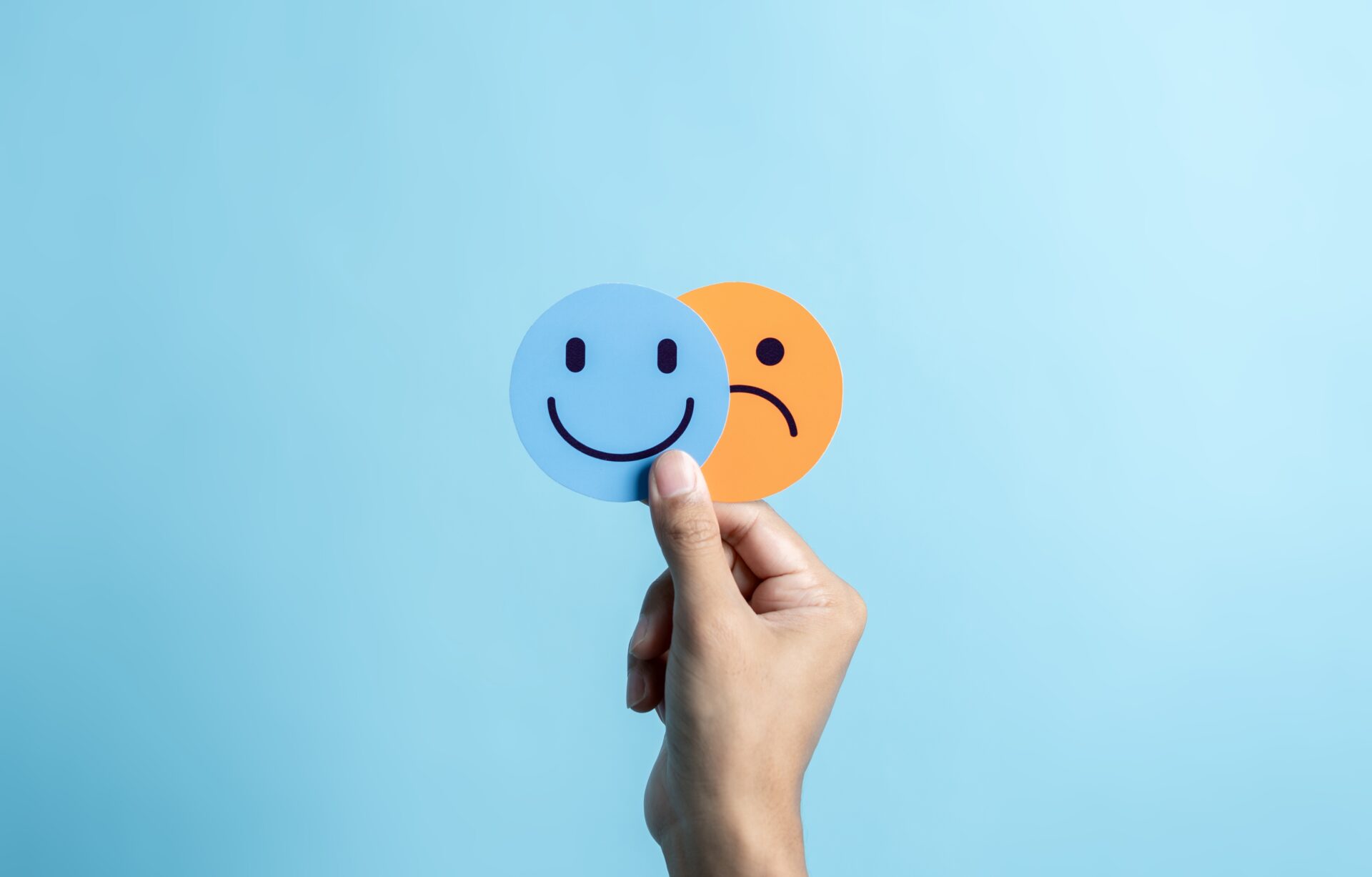Conditions Similar to Bipolar Disorder
Bipolar disorder is a complex mood disorder marked by extreme emotional highs and lows. However, several other mental health conditions can present with similar symptoms, making an accurate diagnosis challenging.
Conditions such as borderline personality disorder, major depressive disorder, ADHD, and schizoaffective disorder may mimic aspects of bipolar disorder, including mood swings, impulsivity, or episodes of depression and mania-like behavior. Understanding these overlapping features is essential for proper diagnosis, effective treatment, and long-term mental health support.

What is Bipolar Disorder?
Bipolar disorder is a common mental health illness or condition that causes mood swings that include extreme highs and lows. These shifts are called mood episodes and range from emotional highs (mania or hypomania) to deep lows (depression). There are two main types of bipolar disorder:
- Bipolar I Disorder: This type of bipolar disorder features severe manic episodes that last a week or more and sometimes require hospitalization.
- Bipolar II Disorder: This type involves less intense manic episodes (called hypomania) paired with periods of severe depression.
Symptoms of mania include increased energy, racing thoughts, a reduced need for sleep, and impulsive behavior that sees the sufferer acting out on their impulses. Depressive episodes more often involve feelings of sadness, fatigue, difficulty concentrating, and sometimes thoughts of self-harm. These mood swings disrupt daily life and relationships, making proper diagnosis and treatment essential [1].
Diagnosis and Treatment Options for Bipolar Disorder
Diagnosing bipolar disorder requires a comprehensive assessment, including interviews with a psychiatrist or psychologist, psychological evaluations, mood tracking, and family history analysis. Since symptoms overlap with several other conditions, misdiagnosing bipolar disorder is common.
Bipolar disorder requires a comprehensive approach to ensure accurate diagnosis and effective treatment. Below is an overview of the diagnostic process, therapeutic interventions, and lifestyle adjustments commonly recommended for managing the condition [2][3][4].
Diagnosis Process
Accurate diagnosis is essential to differentiate bipolar disorder from similar conditions and to guide appropriate treatment. Mental health professionals typically rely on several tools and evaluations, including:
- Clinical interview: A thorough assessment of mood patterns, energy levels, sleep cycles, and behavioral history.
- Mood charting: Patients may be asked to track their mood fluctuations to reveal patterns.
- Family history review: Since bipolar disorder often runs in families, genetic background is carefully considered.
- Ruling out other causes: Lab tests or screenings may be used to eliminate physical or psychological conditions with overlapping symptoms.
Medication
Pharmacological treatment plays a central role in stabilizing mood and reducing symptom severity:
- Mood stabilizers (e.g., lithium): Help prevent and manage manic and depressive episodes.
- Antipsychotics: Often used for severe mood swings or psychotic symptoms
- Antidepressants: Used cautiously and typically alongside mood stabilizers to avoid triggering manic episodes
Psychotherapy
Therapeutic support complements medication by helping individuals understand and manage their condition:
- Cognitive Behavioral Therapy (CBT): Assists in identifying and reframing negative thought patterns
- Psychoeducation: Informs patients and families about the disorder to promote collaborative management
- Interpersonal and Social Rhythm Therapy (IPSRT): Stabilizes daily routines and circadian rhythms, especially sleep
Lifestyle Modifications
Daily habits and self-care routines significantly impact symptom management and long-term stability:
- Consistent sleep schedule: Irregular sleep can trigger mood episodes
- Avoiding drugs and alcohol: These substances can interfere with treatment and worsen symptoms
- Physical activity and mindfulness: Regular exercise and stress-reducing practices support emotional regulation
Which Mental Health Conditions Have Similar Symptoms to Bipolar Disorder?
Several mental health conditions share overlapping symptoms with bipolar disorder, making misdiagnosis relatively common. Disorders such as ADHD, major depressive disorder, and borderline personality disorder can all involve significant mood shifts, impulsivity, and emotional instability. Although these conditions may appear similar on the surface, each has distinct diagnostic features that require careful evaluation by a mental health professional to ensure accurate diagnosis and appropriate treatment [5].
Below are several medical conditions that mimic bipolar disorder [6]:
| Condition | Overlapping Symptoms with Bipolar Disorder | Key Differences to Bipolar Disorder |
| Major Depressive Disorder (MDD) | Persistent sadness or low mood and low energyA loss of interest in activities once enjoyedDifficulty in concentrating or making decisions | People with MDD don’t experience manic or hypomanic episodesPeople with bipolar depression often feel guilt and worthlessness more intensely than those experiencing typical depressive episodes of MDD |
| Borderline Personality Disorder (BPD) | Mood swings that change quicklyImpulsivity in making decisions or actionsDifficulty in maintaining stable relationships (work, family, and personal) | In BPD, external events often trigger mood changes, lasting a few hours to a few days. In bipolar disorder, the episodes last for much longer.People with BPD suffer from a deep-seated fear of abandonment and an unstable or poor self-image that is not seen in bipolar disorder |
| Attention-Deficit/Hyperactivity Disorder (ADHD) | Impulsivity and risk-taking behaviorsDifficulty focusing on or completing tasksHigh energy levels during specific periods, also known as mania | ADHD symptoms are more constant and not tied to mood episodesBipolar disorder has clear mood cycles, while ADHD symptoms are present consistently over time |
| Schizoaffective Disorder | Periods of mania or depression.Psychotic symptoms during mood episodes | The psychotic symptoms in schizoaffective disorder occur even when mood symptoms like mania aren’t present.In bipolar disorder, the psychotic symptoms are tied to extreme mood episodes |
| Cyclothymic Disorder | Periods of emotional highs and lowsFluctuations in energy and activity levels | The mood swings in cyclothymic disorder are less intense and don’t meet the criteria for manic, hypomanic, or depressive episodesThe symptoms of cyclothymic disorder are chronic and can last for at least two years |
| Substance-Induced Mood Disorders | Intense mood changes, like euphoria or deep sadnessRisk-taking or impulsive actions | The symptoms of substance-induced mood disorders are directly linked to drug or alcohol use onlyThe symptoms usually resolve or go away once the substance is removed from the body |
To avoid misdiagnosis and ensure the correct treatment, healthcare professionals first need to exclude these similar mental health conditions when diagnosing bipolar disorder.
The Challenges of Diagnosing Bipolar Disorder
Accurately diagnosing bipolar disorder can be challenging due to the significant overlap it shares with other mental health conditions. Mood swings, impulsivity, and emotional instability are hallmark symptoms not only of bipolar disorder but also of conditions such as ADHD, major depressive disorder, and borderline personality disorder. While these similarities can complicate diagnosis, the underlying causes and patterns of symptoms are key to distinguishing bipolar disorder from other diagnoses.
A thorough diagnostic evaluation is essential and should include a comprehensive review of symptom history, family mental health background, and potential contributing factors such as substance use. One of the primary difficulties is that bipolar disorder often presents gradually, with early symptoms appearing mild and evolving. Clinicians may only observe depressive or manic features initially, making it easy to mistake the condition for another disorder.
For example, depressive episodes in bipolar disorder can closely resemble those of major depression, while manic or hypomanic episodes may be confused with the hyperactivity and impulsiveness associated with ADHD. These overlaps can easily lead to misdiagnosis and, in turn, inappropriate treatment that exacerbates symptoms and delays recovery.
To arrive at an accurate diagnosis, mental health professionals must observe the evolution of symptoms over several weeks or months. This process involves detailed clinical interviews, mood tracking, and the elimination of alternative explanations. Though time-intensive, this careful approach ensures individuals receive effective, tailored treatment.
Ultimately, recognizing the complexity of bipolar disorder and its diagnostic challenges helps reduce stigma and supports better outcomes. With an accurate diagnosis and the right combination of therapy, medication, and support, individuals with bipolar disorder can manage their symptoms effectively and lead stable, fulfilling lives.
Final Thoughts
Proper diagnosis and treatment of bipolar disorder is a nuanced, multi-step process that requires time, expertise, and careful observation. Because bipolar disorder shares symptoms with several other mental health conditions, such as depression, ADHD, and borderline personality disorder, it is frequently misunderstood or misdiagnosed. A thorough clinical evaluation that includes a detailed history, observation over time, and exclusion of other possible causes is essential. This ensures the person receives a treatment plan that addresses their specific symptoms and underlying condition.
When diagnosed accurately, bipolar disorder is highly treatable. Individuals can manage their symptoms and lead stable, productive lives with the right combination of medication, therapy, and lifestyle adjustments. Increased awareness of how bipolar disorder presents and how it can differ from other conditions empowers both clinicians and patients to advocate for more accurate care. The goal is not just symptom control but long-term well-being, personal growth, and a higher quality of life for those with the disorder.
- National Institute of Mental Health. (2024). Depression . Nih.gov. https://www.nimh.nih.gov/health/publications/depression. Accessed June 4 2025.
- Jain, A., & Mitra, P. (2023, February 20). Bipolar Disorder. PubMed; StatPearls Publishing. https://www.ncbi.nlm.nih.gov/books/NBK558998/. Accessed June 4 2025.
- Mind. (2022, February). How bipolar disorder is diagnosed. Www.mind.org.uk. https://www.mind.org.uk/information-support/types-of-mental-health-problems/bipolar-disorder/diagnosing-bipolar/. Accessed June 4 2025.
- Geddes, J. R., & Miklowitz, D. J. (2013). Treatment of bipolar disorder. The Lancet, 381(9878), 1672–1682. https://pmc.ncbi.nlm.nih.gov/articles/PMC3876031/. Accessed June 4 2025.
- National Institute of Mental Health. (2019, April 10). Borderline Personality Disorder. Nih.gov; National Institute of Mental Health. https://www.nimh.nih.gov/health/publications/borderline-personality-disorder. Accessed June 4 2025.
- Shalini Theodore, R., Ramirez Basco, M., & Biggan, J. R. (2012). Diagnostic Disagreements in Bipolar Disorder: The Role of Substance Abuse Comorbidities. Depression Research and Treatment, 2012, 1–6. https://onlinelibrary.wiley.com/doi/10.1155/2012/435486. Accessed June 4 2025.
The Clinical Affairs Team at MentalHealth.com is a dedicated group of medical professionals with diverse and extensive clinical experience. They actively contribute to the development of content, products, and services, and meticulously review all medical material before publication to ensure accuracy and alignment with current research and conversations in mental health. For more information, please visit the Editorial Policy.
MentalHealth.com is a health technology company guiding people towards self-understanding and connection. The platform provides reliable resources, accessible services, and nurturing communities. Its purpose is to educate, support, and empower people in their pursuit of well-being.
Robin Kahler is a blogger who shares her personal experiences and insights regarding her struggles with clinical depression, bipolar disorder, chronic pain, and other challenges.
Brittany Ferri, Ph.D., is a medical reviewer and subject matter expert in behavioral health, pediatrics, and telehealth.
The Clinical Affairs Team at MentalHealth.com is a dedicated group of medical professionals with diverse and extensive clinical experience. They actively contribute to the development of content, products, and services, and meticulously review all medical material before publication to ensure accuracy and alignment with current research and conversations in mental health. For more information, please visit the Editorial Policy.
MentalHealth.com is a health technology company guiding people towards self-understanding and connection. The platform provides reliable resources, accessible services, and nurturing communities. Its purpose is to educate, support, and empower people in their pursuit of well-being.

